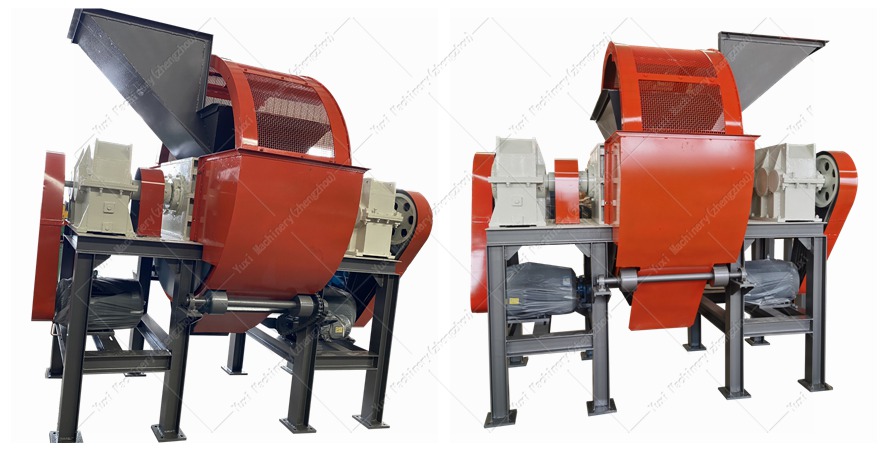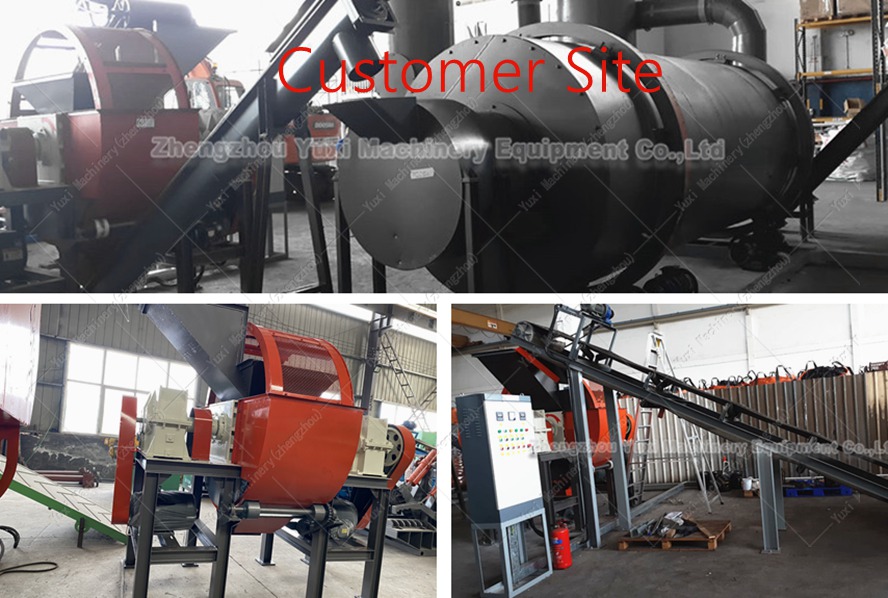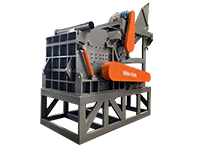Wood shredders are key equipment in modern wood processing, environmental recycling, and agricultural production. Their technical performance and application effects directly affect resource utilization and production efficiency. This article provides a comprehensive analysis of working principles, core technologies, application scenarios, and maintenance points, combined with real cases and common questions, to offer professional guidance for industry practitioners.
Working Principles and Technical Features
A wood shredder is a shear-type crusher mainly used for shredding wood, garden waste, branches, waste wood, etc. It can also be used for cutting irregular wood and furniture processing residues. Its most advanced technology adopts a closed shear structure and controlled feeding to ensure consistent chip length.
Core Technical Features:
• Shear-type Crushing System: Composed of frame, housing, liner, shaft, blades, cutter, pulley, etc., with a reasonable and compact structure.
• Blade Design: Made of alloy material, wear-resistant and durable, with multiple blade options available.
• Drive System: Low-speed, high-torque design for efficient shredding of various wood types.
• PLC Control System: Features start, stop, reverse, and overload automatic reverse functions with high automation.
• Environmental Design: Dust-free operation, meeting modern environmental requirements.

Core Technical Parameters
The performance of wood shredders is determined by the following key parameters:
• Motor Power: Ranges from 30kW to 320kW depending on the model. For example, the YXS-600 model is 30kW, while the YXS-2600 model can reach 320kW.
• Processing Capacity: Ranges from 2-3 tons/hour to 25-60 tons/hour, meeting different production scales.
• Feed Size: Handles wood with a diameter of 3-10 cm.
• Discharge Size: Adjustable by changing screen mesh size, typically from 3mm to 50mm.
• Equipment Size and Weight: Varies by model. For example, the YXS-600 weighs 2.5 tons with dimensions 2.6×2×1.9m, while the YXS-2600 weighs 85 tons with dimensions 8.2×4×4.3m.
Application Scenarios and Real Cases
Wood shredders have a wide range of applications, including:
Agriculture and Forestry
In agriculture, wood shredders are used to process orchard prunings and crop straw. For example, a large orchard in California, USA, uses wood shredders to convert thousands of tons of branches into organic mulch annually, reducing air pollution from burning and improving soil structure and crop yields.
Environmental Protection and Recycling
Urban greening departments widely use wood shredders. In Berlin, Germany, municipal authorities shred street prunings for park mulch or biomass energy production, achieving resource recycling.
Wood Processing
In the wood processing industry, shredders handle边角料 and waste wood. A furniture factory in Zhejiang, China, installed a wood shredder to convert waste wood into particleboard raw material, reducing thousands of tons of wood waste annually and significantly lowering production costs.
Garden Waste Processing
In garden maintenance, wood shredders play an important role. For example, a large park in Tokyo, Japan, uses wood shredders to convert daily prunings and leaves into organic mulch, beautifying the park and reducing waste transportation costs.
Biomass Energy Production
In Nordic countries, wood shredders are widely used in biomass energy production. A biomass power plant in Finland uses wood shredders to convert logging residues and forestry waste into wood chips for boiler fuel, reducing fossil fuel consumption by hundreds of thousands of tons annually.
Construction and Demolition
In construction demolition, wood shredders process waste wood and wood products. A demolition company in New York, USA, uses wood shredders to convert demolished flooring and door/window frames into wood chips for local biomass heating systems.

Selection and Maintenance Points
When selecting a wood shredder, consider the following factors:
• Raw Material Type: Hardwood and softwood require different blade and motor configurations.
• Production Demand: Choose the appropriate model based on daily processing volume.
• Particle Size: Screen mesh size determines discharge particle size, selected based on subsequent use.
• Budget and Space: Balance initial investment and long-term operating costs, considering site space.
• Automation Level: Choose manual or fully automatic feeding systems based on operational needs.
• After-sales Service: Select manufacturers with good technical support and spare parts supply.
Maintenance Points:
• Bearing Maintenance: Apply grease to shaft bearings regularly to prevent overheating and damage.
• V-belt Adjustment: Re-adjust V-belt tension periodically, pressing the middle of the belt down by 6-10 mm.
• Blade Inspection: Regularly check blade wear and replace or sharpen as needed.
• Cleaning and Lubrication: Maintain good lubrication of motors and bearings, and clean the crushing chamber and screen regularly to prevent blockages.
• Feed Management: Ensure uniform feeding to avoid overloading.
• Electrical System Maintenance: Regularly inspect the PLC control system and motor operation for safety and reliability.
Frequently Asked Questions
Can wood shredders handle all types of wood?
Wood shredders are suitable for most wood types, including hardwood and softwood. However, extremely hard wood or wood with large metal impurities may require special treatment or preprocessing to avoid blade and equipment damage.
How to improve the efficiency of wood shredders?
Efficiency can be improved by keeping blades sharp, regular maintenance, uniform feeding, adjusting screen mesh size according to raw materials, and selecting appropriate motor power.
How to control noise and dust from wood shredders?
Noise and dust can be controlled by installing soundproof enclosures and using dust removal equipment (e.g., cyclone separators or bag filters). Additionally, choosing low-noise equipment is effective.
What is the service life of wood shredders?
Service life depends on usage frequency, maintenance, and raw material type. Generally, high-quality wood shredders can last 5-10 years or longer with proper maintenance.
How to handle common failures of wood shredders?
Common failures include blade wear, screen blockage, and motor overload. Solutions include timely blade replacement, screen cleaning, adjusting feeding speed, or changing to a more suitable screen. For persistent issues, consult professional technicians.
What is the energy consumption of wood shredders?
Energy consumption varies by model and processing volume, typically 20-50 kWh per ton of wood. Choosing the right model and optimizing operations can effectively reduce energy consumption.
What are the safety operation precautions for wood shredders?
Safety precautions include: operators must undergo professional training, inspect all safety devices before starting, maintain a safe distance during operation, and conduct regular safety inspections.
What is the investment payback period for wood shredders?
The payback period depends on factors such as equipment cost, operating costs, savings in transportation and disposal fees, and revenue from selling wood chips or saving fuel costs. Generally, under proper application, the payback period can be achieved within 1-3 years.

Through this in-depth analysis, readers should have a comprehensive understanding of wood shredder working principles, application scenarios, and maintenance points. In practical applications, selecting the right equipment based on specific needs and conducting scientific maintenance will help improve production efficiency and achieve resource recycling.
 Shredding Machine
Shredding Machine
 Waste Recycling Line
Waste Recycling Line
 Optional Equipment
Optional Equipment



